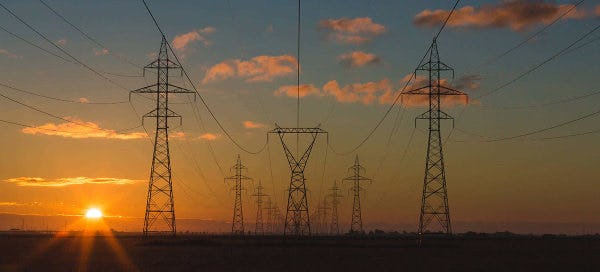Passive Houses in Texas are high-efficiency homes designed for minimal energy usage and maximum comfort, even in the sweltering, but sometimes freezing, Texas climate. If you're thinking of making your home a Passive House, we'll cover everything you need to know—from essential design elements to cost considerations, renewable energy options, and long-term return on investment. When done right, a Passive House can offer big savings, improved indoor air quality, and a more resilient, future-proof home.
In short, Passive Homes offer...
Energy Efficiency: Upfront investment in Passive House materials yields long-term savings and comfort.
Healthy Air Quality: Continuous, filtered ventilation reduces allergens and pollutants.
Stability & Resilience: Passive Houses maintain livable conditions even during outages, as shown by Texas examples.
Clean Energy Options: Pairing with renewables like solar leverages the home’s reduced load for even greater savings.
What, Exactly, Is a Passive House?
A Passive House is not just any energy-efficient home. It's a house that adheres to rigorous design principles that prioritize airtightness, continuous insulation, balanced ventilation with heat recovery, and careful window placement. The goal? Keep indoor climates steady year-round, drastically slash energy bills, and ensure top-tier indoor air quality.
What Makes a Passive House in Texas Unique?
Unlike cooler climates, Texas Passive Houses focus heavily on cooling and humidity control. Airtight construction and advanced insulation seal out hot air and moisture. Proper shading, overhangs, and north-south window orientations limit solar gain, while efficient HVAC systems and dedicated dehumidifiers fine-tune comfort.
Benefits of a Passive House in Texas
Energy Savings: Advanced sealing and insulation cut down on the cooling load, often achieving up to 90% energy reduction compared to standard homes. With lower usage, you can easily compare plans to ensure you always have the best deal and are saving the most money.
Improved Air Quality: Continuous ventilation with filtration cleans and refreshes indoor air, critical for Texans who battle pollen and high humidity. Cleaner air also means a healthier, more comfortable living environment.
Year-Round Comfort: Passive Houses stabilize indoor temperatures, reducing dependency on large AC units.
Potential Drawbacks & Challenges
Upfront Costs: High-performance windows, insulation, and ERVs cost more initially but pay off in long-term savings. Federal tax credits or local incentives can offset these costs, as can careful choice of renewable plans.
Design Limitations: Achieving Passive House certification might limit some architectural choices. Extensive glazing facing west, for example, can be problematic. But thoughtful planning helps maintain aesthetics while meeting efficiency goals.
Design Adaptations for Hot, Humid Regions
For Texas climates, focusing on moisture control and solar heat gain is key. Moisture-resistant wall assemblies and proper flashing combat humidity, while shading and window coatings manage intense summer sunlight. Pair these efforts with a renewable plan that aligns with your home’s reduced load—especially if you consider adding rooftop solar, knowing that buyback options are available.
In Texas, Passive House designs must adapt to all types of weather, year-round. That means airtight construction, advanced insulation, shading strategies, and energy recovery ventilation. According to the U.S. Energy Information Administration (EIA), residential cooling is a major energy draw in Texas, but an airtight Passive House paired with green energy helps slash consumption. Even during emergencies, Passive Houses remain surprisingly comfortable, as shown by experiences detailed at the Passive House Accelerator’s coverage of Passive Survivability in Texas.
Going Solar Just Makes Sense
Passive Houses pair excellently with solar panels, further trimming costs by generating your own power, and lowering emissions. Here's a quick look at what size of solar system your Passive House might need.

Real-Life Examples of Passive Houses in Texas
Certified Passive House projects in Austin and Dallas have shown remarkable stability during power outages. During the 2021 winter storm, a Passive House retrofit in Austin maintained livable indoor temperatures long after the grid went down. Combining airtight construction, proper insulation, and renewable energy sources can create a home prepared for the unpredictable.
Cost Considerations & ROI for Passive Houses in Texas
Though initial costs can be higher, long-term energy savings and incentives often make Passive Houses financially attractive. Over a 30-year mortgage, reduced energy bills offset the premiums for high-performance materials.
As Texas grapples with climate volatility and rising energy costs, Passive Houses offer a practical, future-proof solution. They reduce energy use, lower bills, improve indoor air quality, and enhance resilience against power failures. The synergy between high-efficiency design and renewable energy creates comfortable, stable environments tailored for Texas climates.
Could a Passive House be on your horizon?

FAQ
Can Passive House principles significantly reduce AC costs in Texas?
Yes. Because Passive House designs minimize heat gain and improve airtightness, the need for large, energy-intensive AC units diminishes. Many Texas Passive House owners report drastically reduced cooling costs, especially when paired with renewable energy plans.
Are there incentives for building a Passive House in Texas?
While Texas lacks a statewide Passive House incentive, you can explore federal tax credits, utility rebates, and local energy-efficient mortgage programs. Additionally, some energy providers offer special rates or credits for efficient homes.
How does renewable energy support Passive House living in Texas?
Renewable energy sources like solar and wind complement Passive House efficiency. Using a green energy plan ensures that the limited electricity you do consume comes from cleaner, sustainable sources.
Can I retrofit my current home to Passive House standards?
Retrofits are possible but can be more complex than new builds. Working with experienced professionals is key. Strategic improvements—like better insulation, airtightness, and advanced ventilation—can bring your existing home closer to Passive House performance.
How do Passive Houses handle hurricanes and storms?
Passive House construction focuses on robust building envelopes and can integrate hurricane-rated windows, strong insulation, and moisture barriers. These features, combined with advanced sealing techniques, can help mitigate storm damage and maintain livable conditions during outages.
Where can I find more guidance or incentives?
Check out A Friendly Guide to THEEP for energy efficiency programs, or conduct a DIY Energy Audit to understand your home’s baseline.




